Top 10 of the Decade
Neanderthal Genome
By JASON URBANUS
Friday, December 18, 2020
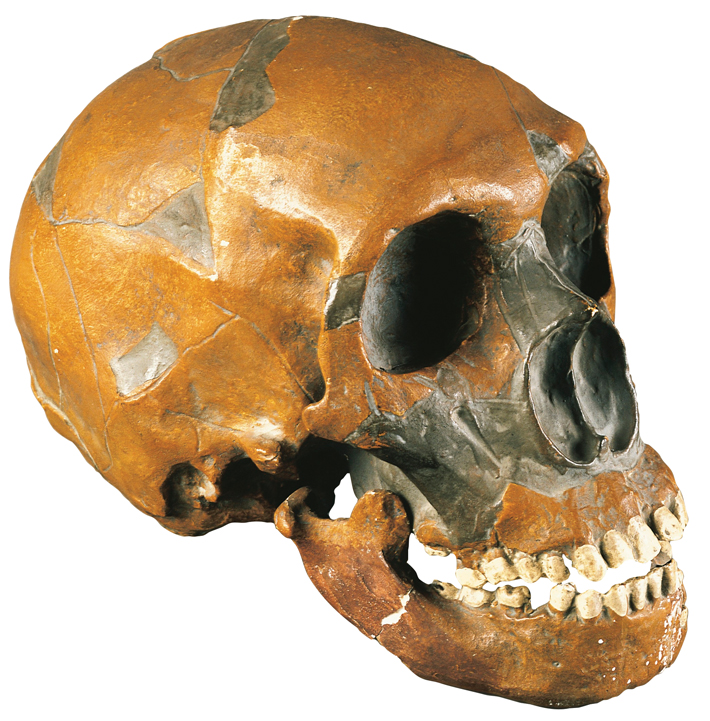 Neanderthals—Homo sapiens’ closest cousins—went extinct around 30,000 years ago. Yet some people possess genetic markers inherited from these distant relatives. This was the conclusion of a groundbreaking 2010 study led by Svante Pääbo of the Max Planck Institute, whose team successfully sequenced a Neanderthal genome for the first time. Around 400,000 years ago, Neanderthals diverged from the primate line that would go on to produce Homo sapiens, and spread to parts of Europe and western Asia. After modern humans migrated out of Africa, researchers believe they encountered and interbred with Neanderthals in the Middle East around 60,000 years ago. As a result, modern humans of non-African descent share around 2 percent of their DNA with Neanderthals. Scientists are still learning how these genes manifest themselves. “Neanderthals contributed DNA to present-day people,” says Pääbo, “and this has physiological effects today, for example in immune defense, pain sensitivity, risk for miscarriages, and susceptibility to severe outcomes from COVID-19.”
Neanderthals—Homo sapiens’ closest cousins—went extinct around 30,000 years ago. Yet some people possess genetic markers inherited from these distant relatives. This was the conclusion of a groundbreaking 2010 study led by Svante Pääbo of the Max Planck Institute, whose team successfully sequenced a Neanderthal genome for the first time. Around 400,000 years ago, Neanderthals diverged from the primate line that would go on to produce Homo sapiens, and spread to parts of Europe and western Asia. After modern humans migrated out of Africa, researchers believe they encountered and interbred with Neanderthals in the Middle East around 60,000 years ago. As a result, modern humans of non-African descent share around 2 percent of their DNA with Neanderthals. Scientists are still learning how these genes manifest themselves. “Neanderthals contributed DNA to present-day people,” says Pääbo, “and this has physiological effects today, for example in immune defense, pain sensitivity, risk for miscarriages, and susceptibility to severe outcomes from COVID-19.”
Neolithic City of Shimao
By JASON URBANUS
Friday, December 18, 2020
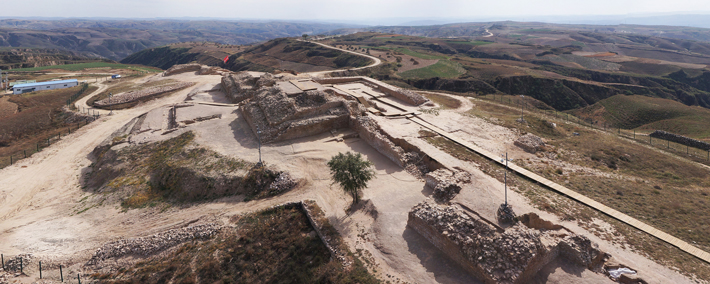 It was originally thought that the ancient stone walls visible on the edge of the Mu Us Desert in the northern province of Shaanxi had once been part of the Great Wall. But, when archaeologists examined them intensively, they realized something much older and more complex was buried there. They had discovered the lost city of Shimao, which dates back to 2300 B.C. Over the past 10 years, excavators including Zhouyong Sun of the Shaanxi Provincial Institute of Archaeology have uncovered a stone city with immense fortifications and sophisticated infrastructure, thousands of luxurious artifacts, and a 230-foot-high stepped pyramid that served as the residence for Shimao’s rulers and leading families. The site’s early date and peripheral location were surprising since Chinese civilization was thought to have first developed in the Central Plains around 500 years after Shimao’s founding. “The discovery really puzzled me and other archaeologists,” says Sun. “Shimao reveals a unique trajectory to urbanism in China. This once-powerful kingdom was completely unknown in ancient textual records.”
It was originally thought that the ancient stone walls visible on the edge of the Mu Us Desert in the northern province of Shaanxi had once been part of the Great Wall. But, when archaeologists examined them intensively, they realized something much older and more complex was buried there. They had discovered the lost city of Shimao, which dates back to 2300 B.C. Over the past 10 years, excavators including Zhouyong Sun of the Shaanxi Provincial Institute of Archaeology have uncovered a stone city with immense fortifications and sophisticated infrastructure, thousands of luxurious artifacts, and a 230-foot-high stepped pyramid that served as the residence for Shimao’s rulers and leading families. The site’s early date and peripheral location were surprising since Chinese civilization was thought to have first developed in the Central Plains around 500 years after Shimao’s founding. “The discovery really puzzled me and other archaeologists,” says Sun. “Shimao reveals a unique trajectory to urbanism in China. This once-powerful kingdom was completely unknown in ancient textual records.”
The Grave of Richard III
By JASON URBANUS
Friday, December 18, 2020
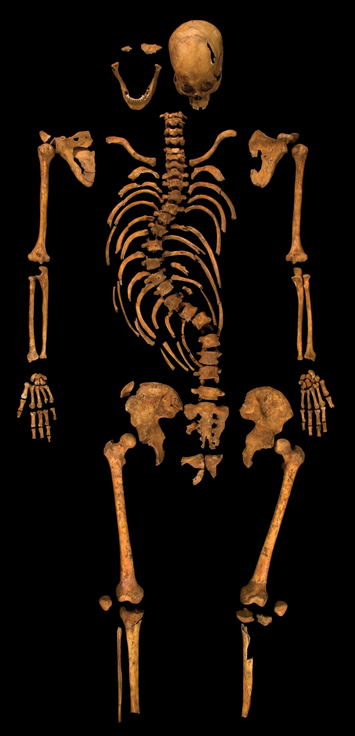 After Richard III—England’s most vilified monarch—was killed in the Battle of Bosworth in 1485, he was hastily buried in Leicester’s Greyfriars church. When the church was demolished 50 years later by Henry VIII, the grave of the last Plantagenet king was lost. Almost 500 years later, it was identified a few feet beneath a parking lot. “The odds were heavily stacked against us,” says Richard Buckley of the University of Leicester Archaeological Services. “What were the chances of the grave surviving for so many years in the middle of a great industrial city?”
After Richard III—England’s most vilified monarch—was killed in the Battle of Bosworth in 1485, he was hastily buried in Leicester’s Greyfriars church. When the church was demolished 50 years later by Henry VIII, the grave of the last Plantagenet king was lost. Almost 500 years later, it was identified a few feet beneath a parking lot. “The odds were heavily stacked against us,” says Richard Buckley of the University of Leicester Archaeological Services. “What were the chances of the grave surviving for so many years in the middle of a great industrial city?”
Yet, radiocarbon dating and osteological analysis confirmed the bones as Richard’s. The skeleton displayed serious wounds, including blows to the head, consistent with reports of Richard’s battlefield injuries. His severely curved spine, caused by adolescent scoliosis, may have led to exaggerated portrayals of Richard’s physical deformities by his enemies. Subsequent DNA testing even identified at least one living relative, a descendant of his sister Anne.
Child and Llama Sacrifice
By JASON URBANUS
Friday, December 18, 2020
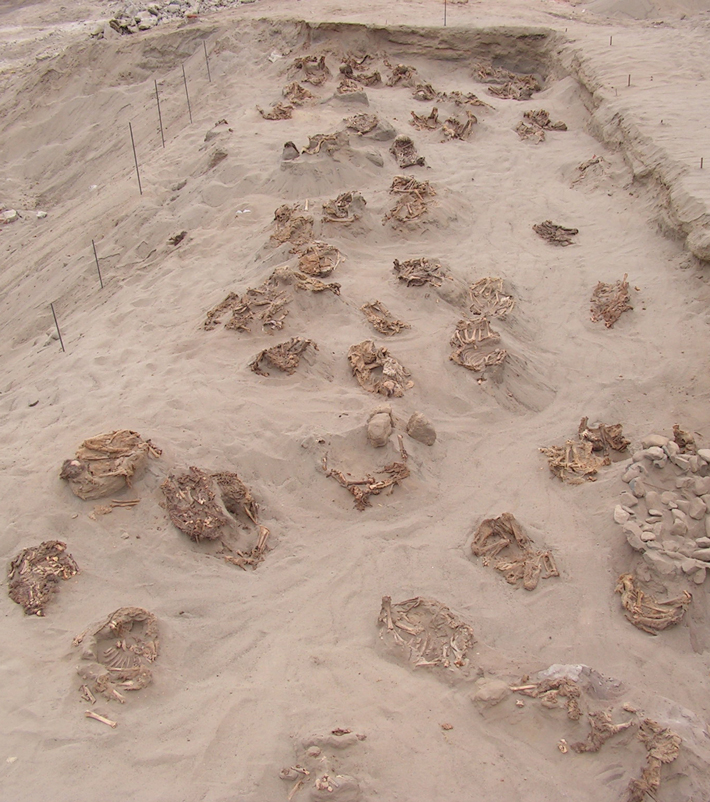 A decade ago, archaeologists were summoned to investigate a scattering of human and camelid bones outside the modern city of Trujillo. They would soon learn that the 500-year-old remains belonged to the victims of a mass ritual sacrifice, the largest of its kind known in the Americas. In total, the skeletons of 200 llamas and 140 boys and girls were recovered from the Chimu site of Huanchaquito–Las Llamas. Cut marks on the children’s ribs and sternums suggest their hearts were removed during the ritual before each victim was carefully prepared for burial. “Despite the bloody ceremonies, I was shocked by the careful postmortem treatment of the bodies,” says University of Florida archaeologist Gabriel Prieto. “They didn’t simply discard them.” At first, Prieto and his colleagues John Verano of Tulane University and Nicolas Goepfert of France’s CNRS thought that the sacrificial event was a singular response to dire climatic changes. However, in recent years, more sacrifice sites spanning hundreds of years have been identified in the region, leading him to conclude that such ceremonies were a central component of the Chimu religion.
A decade ago, archaeologists were summoned to investigate a scattering of human and camelid bones outside the modern city of Trujillo. They would soon learn that the 500-year-old remains belonged to the victims of a mass ritual sacrifice, the largest of its kind known in the Americas. In total, the skeletons of 200 llamas and 140 boys and girls were recovered from the Chimu site of Huanchaquito–Las Llamas. Cut marks on the children’s ribs and sternums suggest their hearts were removed during the ritual before each victim was carefully prepared for burial. “Despite the bloody ceremonies, I was shocked by the careful postmortem treatment of the bodies,” says University of Florida archaeologist Gabriel Prieto. “They didn’t simply discard them.” At first, Prieto and his colleagues John Verano of Tulane University and Nicolas Goepfert of France’s CNRS thought that the sacrificial event was a singular response to dire climatic changes. However, in recent years, more sacrifice sites spanning hundreds of years have been identified in the region, leading him to conclude that such ceremonies were a central component of the Chimu religion.
The Wrecks of Erebus and Terror
By JASON URBANUS
Friday, December 18, 2020
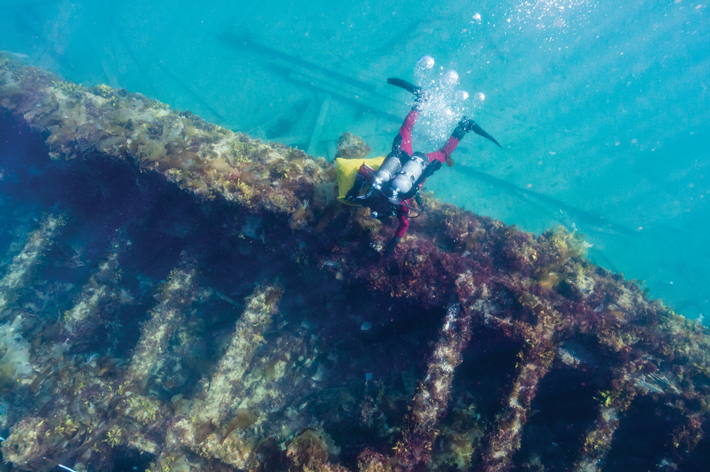 Captain John Franklin set sail from England in May 1845 with 133 men and two ships—HMS Erebus and HMS Terror—in search of the Northwest Passage. The crews of two whaling ships that sighted the expedition that August were the last Europeans to see Franklin and his crew alive, sparking a nearly 170-year maritime mystery. Search parties sent to northern Canada occasionally happened upon ominous clues: items left behind by the expedition, grim testimonies from Inuit witnesses, and even a note left by a crewman on King William Island in 1847 stating that the two ships had become trapped in the ice. In 2014, Canadian authorities announced that researchers had finally located Erebus at the bottom of Wilmot and Crampton Bay. Two years later, Terror was found around 45 miles away. Both wrecks are remarkably well preserved and, in recent years, underwater archaeologists have explored the ships’ cabins and retrieved hundreds of objects, which are helping experts piece together the final days of Franklin’s fateful voyage. To read more about the Franklin Expedition and the discovery of Erebus, go to “Franklin’s Last Voyage.”
Captain John Franklin set sail from England in May 1845 with 133 men and two ships—HMS Erebus and HMS Terror—in search of the Northwest Passage. The crews of two whaling ships that sighted the expedition that August were the last Europeans to see Franklin and his crew alive, sparking a nearly 170-year maritime mystery. Search parties sent to northern Canada occasionally happened upon ominous clues: items left behind by the expedition, grim testimonies from Inuit witnesses, and even a note left by a crewman on King William Island in 1847 stating that the two ships had become trapped in the ice. In 2014, Canadian authorities announced that researchers had finally located Erebus at the bottom of Wilmot and Crampton Bay. Two years later, Terror was found around 45 miles away. Both wrecks are remarkably well preserved and, in recent years, underwater archaeologists have explored the ships’ cabins and retrieved hundreds of objects, which are helping experts piece together the final days of Franklin’s fateful voyage. To read more about the Franklin Expedition and the discovery of Erebus, go to “Franklin’s Last Voyage.”
Advertisement
Advertisement
IN THIS ISSUE
Advertisement

Recent Issues
-
 May/June 2024
May/June 2024
-
 March/April 2024
March/April 2024
-
 January/February 2024
January/February 2024
-
 November/December 2023
November/December 2023
-
 September/October 2023
September/October 2023
-
 July/August 2023
July/August 2023
-
 May/June 2023
May/June 2023
-
 March/April 2023
March/April 2023
-
 January/February 2023
January/February 2023
-
 November/December 2022
November/December 2022
-
 September/October 2022
September/October 2022
-
 July/August 2022
July/August 2022
-
 May/June 2022
May/June 2022
-
 March/April 2022
March/April 2022
-
 January/February 2022
January/February 2022
-
 November/December 2021
November/December 2021
-
 September/October 2021
September/October 2021
-
 July/August 2021
July/August 2021
-
 May/June 2021
May/June 2021
-
 March/April 2021
March/April 2021
-
 January/February 2021
January/February 2021
-
 November/December 2020
November/December 2020
-
 September/October 2020
September/October 2020
-
 July/August 2020
July/August 2020
-
 May/June 2020
May/June 2020
-
 March/April 2020
March/April 2020
-
 January/February 2020
January/February 2020
-
 November/December 2019
November/December 2019
-
 September/October 2019
September/October 2019
-
 July/August 2019
July/August 2019
-
 May/June 2019
May/June 2019
-
 March/April 2019
March/April 2019
-
 January/February 2019
January/February 2019
-
 November/December 2018
November/December 2018
-
 September/October 2018
September/October 2018
-
 July/August 2018
July/August 2018
-
 May/June 2018
May/June 2018
-
 March/April 2018
March/April 2018
-
 January/February 2018
January/February 2018
-
 November/December 2017
November/December 2017
-
 September/October 2017
September/October 2017
-
 July/August 2017
July/August 2017
-
 May/June 2017
May/June 2017
-
 March/April 2017
March/April 2017
-
 January/February 2017
January/February 2017
-
 November/December 2016
November/December 2016
-
 September/October 2016
September/October 2016
-
 July/August 2016
July/August 2016
-
 May/June 2016
May/June 2016
-
 March/April 2016
March/April 2016
-
 January/February 2016
January/February 2016
-
 November/December 2015
November/December 2015
-
 September/October 2015
September/October 2015
-
 July/August 2015
July/August 2015
-
 May/June 2015
May/June 2015
-
 March/April 2015
March/April 2015
-
 January/February 2015
January/February 2015
-
 November/December 2014
November/December 2014
-
 September/October 2014
September/October 2014
-
 July/August 2014
July/August 2014
-
 May/June 2014
May/June 2014
-
 March/April 2014
March/April 2014
-
 January/February 2014
January/February 2014
-
 November/December 2013
November/December 2013
-
 September/October 2013
September/October 2013
-
 July/August 2013
July/August 2013
-
 May/June 2013
May/June 2013
-
 March/April 2013
March/April 2013
-
 January/February 2013
January/February 2013
-
 November/December 2012
November/December 2012
-
 September/October 2012
September/October 2012
-
 July/August 2012
July/August 2012
-
 May/June 2012
May/June 2012
-
 March/April 2012
March/April 2012
-
 January/February 2012
January/February 2012
-
 November/December 2011
November/December 2011
-
 September/October 2011
September/October 2011
-
 July/August 2011
July/August 2011
-
 May/June 2011
May/June 2011
-
 March/April 2011
March/April 2011
-
 January/February 2011
January/February 2011
Advertisement






